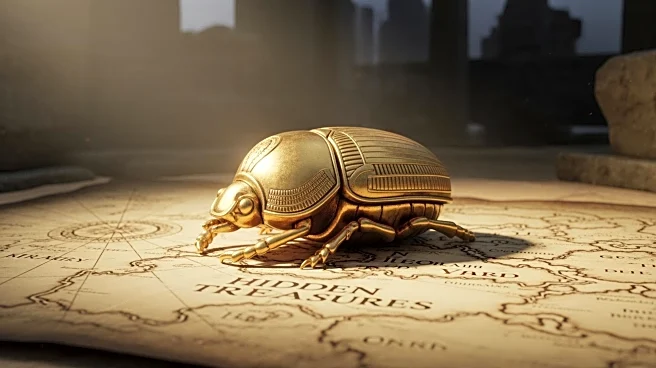What's Happening?
The landscape of licensed tie-in comics is evolving, with publishers increasingly allowing creative freedom to writers and artists. This shift is exemplified by projects like Boom! Studios' Adventure Time
comics and IDW's Teenage Mutant Ninja Turtles series, which have brought in diverse talent to expand on existing intellectual properties. Publishers are tapping into unique voices, such as Eisner winner Tillie Walden for a Walking Dead spin-off, to attract new fans and elevate the source material. This trend is reshaping the industry, offering creators more leeway to innovate within established franchises.
Why It's Important?
The move towards creative freedom in licensed comics is significant as it allows for fresh interpretations and expansions of beloved franchises, potentially attracting a wider audience. By involving diverse creators, publishers can introduce new perspectives and storytelling techniques, enriching the comic book industry. This approach not only revitalizes older properties but also supports emerging talent, fostering a more inclusive and dynamic creative environment. The success of these projects could encourage other publishers to adopt similar strategies, leading to a broader range of content and increased market competitiveness.
What's Next?
As publishers continue to embrace creative freedom, the comic book industry may see an influx of innovative projects that challenge traditional narratives. This could lead to collaborations between established and emerging creators, further diversifying the types of stories being told. The success of these tie-ins might inspire other media industries to adopt similar practices, potentially influencing film, television, and gaming adaptations. Additionally, the positive reception of these projects could encourage licensors to grant more creative control, fostering a culture of experimentation and artistic expression.
Beyond the Headlines
The trend towards creative freedom in licensed comics highlights the evolving relationship between licensors and creators, emphasizing trust and collaboration. It raises questions about intellectual property rights and the balance between maintaining brand integrity and allowing artistic innovation. This shift could lead to long-term changes in how media tie-ins are developed, potentially influencing licensing agreements and industry standards. By prioritizing creativity, publishers are setting a precedent for future projects, encouraging a more open and flexible approach to storytelling.











